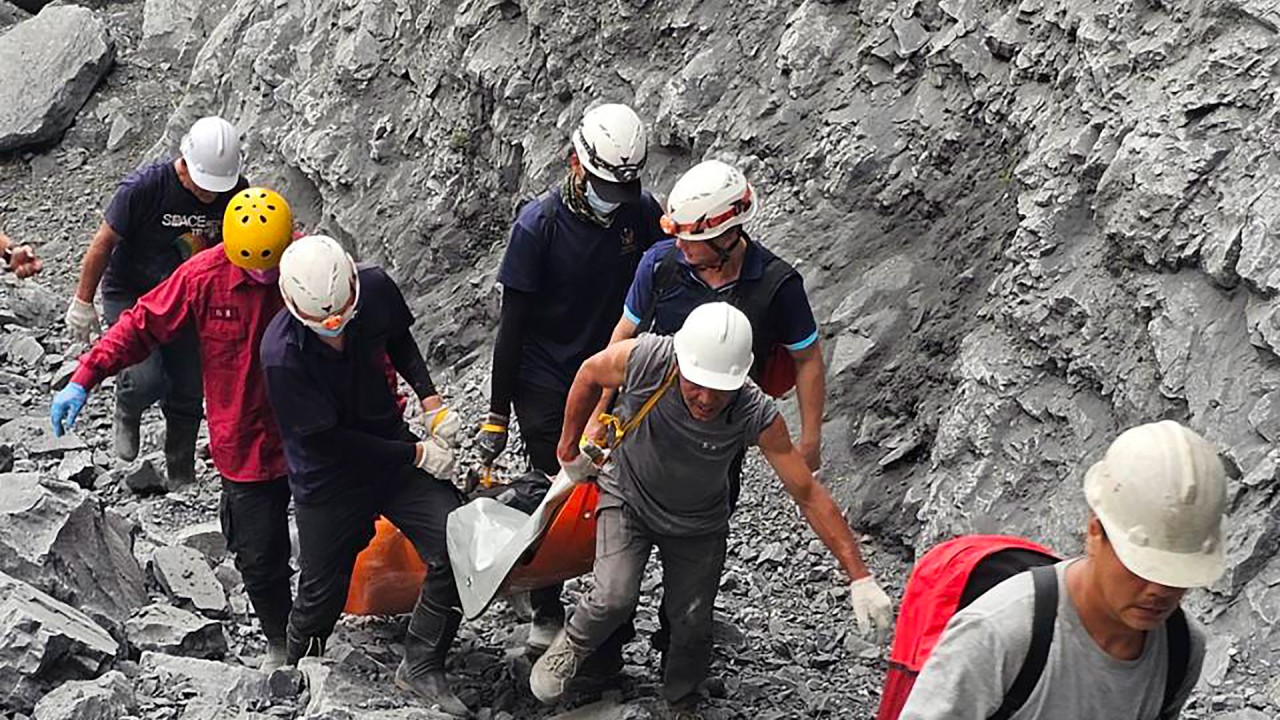
Tech war: Intel’s US$7 billion loss a cost of winning back American supremacy in chip production, says chief executive
- Patrick Gelsinger tells the Council on Foreign Relations having over half world’s chips manufactured ‘just 100km from Chinese soil’ is not sustainable
- Once the world leader in semiconductors, the chip maker is a major focus of US President Joe Biden’s efforts to maintain US global tech supremacy
“I want people who are committed to the strategic journey of rebuilding the most iconic technology company in American history, who is building long-term manufacturing capacity for the digital future that is more critical to every aspect of human life, the national security and the economic engine. That’s who I want as my investor,” veteran engineer Patrick Gelsinger said.
Gelsinger made the remarks at an event organised by the Council on Foreign Relations, a think tank based in New York.
Emphasising that there is only one Western firm among the three companies “on the planet” that can make advanced semiconductors, Gelsinger added that “rebuilding the Western supply chains of the world” could become profitable in the years to come.
“We expect to break even in that business in the 2027 time frame. And then turn nicely profitable,” he said of the company’s plan.
Gelsinger said “part of the problem is we have to significantly overinvest to get back to competitive” against Asian rivals.
Intel discloses US$7 billion operating loss for chip-making unit
Last month, US President Joe Biden said Intel would receive US$19.5 billion in federal help to build and modernise its semiconductor factories in Arizona, New Mexico, Oregon and Ohio.
Washington views US reliance on foreign-made chips and China’s rising military and global influence as a national security threat. The revitalisation of Intel’s chipmaking business has been linked to maintaining the US’ global tech lead.
Gelsinger, who had previously spent 30 years at Intel in engineering and leadership roles, returned to the company as chief executive in 2021 with a comeback plan that included rebranding its chipmaking business. The goal was to catch up with Taiwan Semiconductor Manufacturing Company (TSMC), a leading chip maker that counts Apple and Google among its clients.

On Thursday, he said three decades of defined industrial policy by Taiwan, South Korea, Japan and mainland China had attracted and consolidated the chip manufacturing industry to Asia.
He said incentives in Asian chip hubs included tax preferences, land grants, R&D credits, university programmes and a government push for firms to invest in TSMC, Intel’s Taipei-based rival that Gelsinger said was “the technology centre of the world”.
He added that when more than half the world’s chips are manufactured in one region “just 100km from Chinese soil”, that “is not a sustainable situation for the world”.
Founded in the late 1960s, Intel – one of the original anchors of Silicon Valley – was initially the world’s leading chip manufacturer. In the 1990s, almost 40 per cent of the world’s semiconductors were produced in the US.
TSMC restarts operations after earthquake, reassuring no chip supply disruption
Intel’s supremacy had ended by the mid-2010s because of rising costs and intense foreign competition.
Today, US manufacturers produce less than 10 per cent of the world’s chips and none of the most advanced ones. About 80 per cent of chip production takes place in Asia, and the most advanced chips are made exclusively by TSMC.
Gelsinger said Intel aims to deploy its latest chip production technology by 2025 and, thanks to the export controls imposed by the US government on China, the Asian powerhouse cannot close the gap any time soon.
He added that as the gap widens over time, China’s demand for hi-tech chips will increase, allowing Western companies to tend to the Chinese market – which accounts for about 25 per cent of the global semiconductor market.
However, Gelsinger warned that Washington and its “global allies” must be aligned and “very thoughtful about what technologies you want to be exportable” to China because there are “good valid reasons for national security”.
“In the semiconductor industry in particular, that means Europe and Japan. Almost every semiconductor technology comes from the US, Europe or Japan, and if we are aligned in our export policies, on how we view the rest of the world, that defines the technology for the world,” he said.



